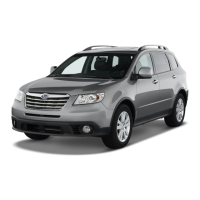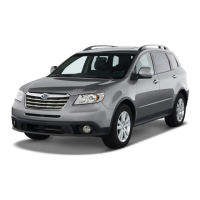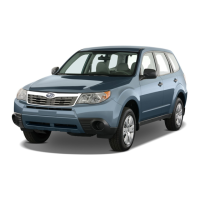Do you have a question about the Subaru 2010 Impreza and is the answer not in the manual?
Instructions on how to start and operate the vehicle.
Information on seat, seatbelt, and SRS airbags usage and precautions.
Procedures to follow in case of driving emergencies.
Information on operating keys, locks, and windows.
Information on scheduled maintenance and proper vehicle upkeep.
Essential precautions for safe driving concerning seatbelts and SRS airbags.
Explanation of the seatbelt warning light and chime operation.
Information on the SRS airbag warning light and potential malfunctions.
Safety tips and proper usage of seatbelts for all occupants.
Overview of the SRS airbag system, its components, and deployment logic.
Explanation of ignition switch positions and safety precautions.
Explanation of various warning and indicator lights on the instrument panel.
Procedure for starting the engine using the START position.
How to use the automatic and semi-automatic climate control systems.
How to insert, play, and eject CDs in the player.
Information on fuel requirements, octane ratings, and capacities.
Procedures for starting the engine in MT and AT models, with troubleshooting tips.
Overview of the automatic transmission, including manual and SPORT modes.
General braking tips and system overview.
Recommendations for breaking in a new vehicle to ensure performance and longevity.
Techniques for safe driving on slippery road surfaces.
Information and precautions regarding the temporary spare tire.
What to do when experiencing a flat tire while driving.
Safety precautions and procedures for jump starting a vehicle.
What to do if steam is observed coming from the engine compartment.
Overview of scheduled maintenance items and where to find detailed schedules.
General safety precautions and recommendations for performing maintenance.
Information on engine oil, including consumption and checking the level.
How the TPMS warns of low tire pressure and system malfunctions.
How to maintain correct tire pressures and recognize abnormal tire wear.
Instructions on how to start and operate the vehicle.
Information on seat, seatbelt, and SRS airbags usage and precautions.
Procedures to follow in case of driving emergencies.
Information on operating keys, locks, and windows.
Information on scheduled maintenance and proper vehicle upkeep.
Essential precautions for safe driving concerning seatbelts and SRS airbags.
Explanation of the seatbelt warning light and chime operation.
Information on the SRS airbag warning light and potential malfunctions.
Safety tips and proper usage of seatbelts for all occupants.
Overview of the SRS airbag system, its components, and deployment logic.
Explanation of ignition switch positions and safety precautions.
Explanation of various warning and indicator lights on the instrument panel.
Procedure for starting the engine using the START position.
How to use the automatic and semi-automatic climate control systems.
How to insert, play, and eject CDs in the player.
Information on fuel requirements, octane ratings, and capacities.
Procedures for starting the engine in MT and AT models, with troubleshooting tips.
Overview of the automatic transmission, including manual and SPORT modes.
General braking tips and system overview.
Recommendations for breaking in a new vehicle to ensure performance and longevity.
Techniques for safe driving on slippery road surfaces.
Information and precautions regarding the temporary spare tire.
What to do when experiencing a flat tire while driving.
Safety precautions and procedures for jump starting a vehicle.
What to do if steam is observed coming from the engine compartment.
Overview of scheduled maintenance items and where to find detailed schedules.
General safety precautions and recommendations for performing maintenance.
Information on engine oil, including consumption and checking the level.
How the TPMS warns of low tire pressure and system malfunctions.
How to maintain correct tire pressures and recognize abnormal tire wear.
| Brand | Subaru |
|---|---|
| Model | 2010 Impreza |
| Category | Automobile |
| Language | English |












